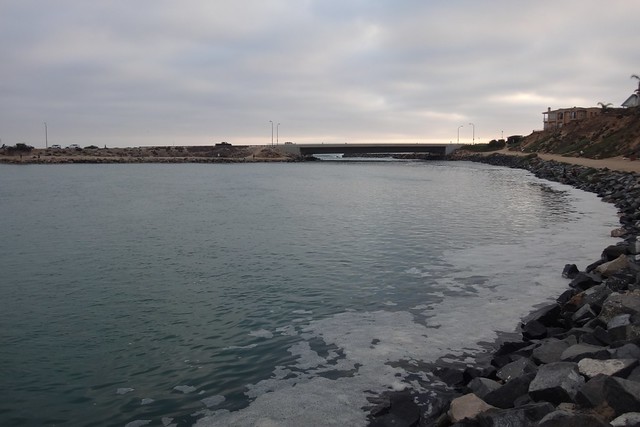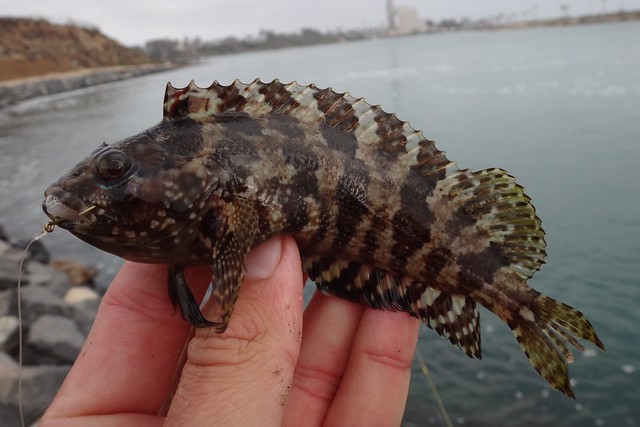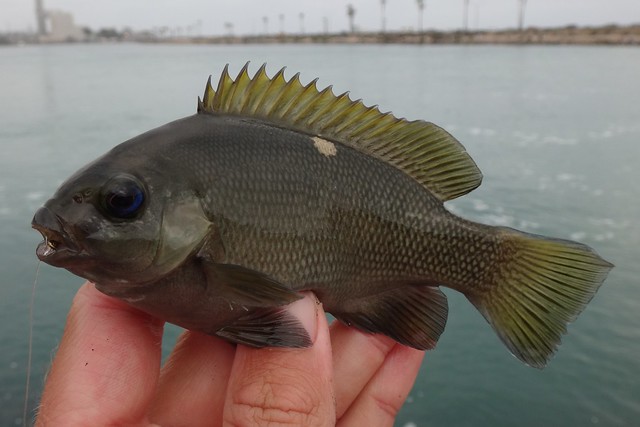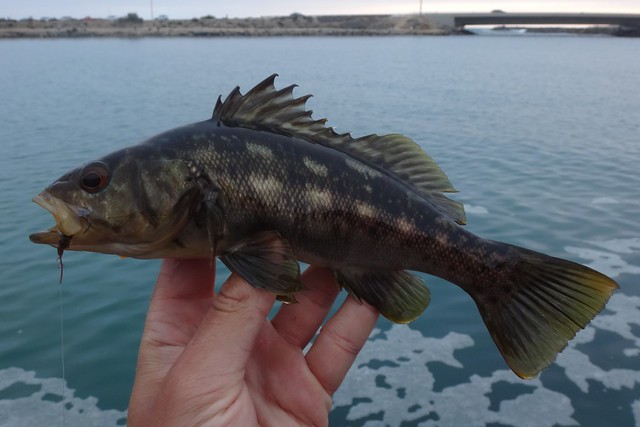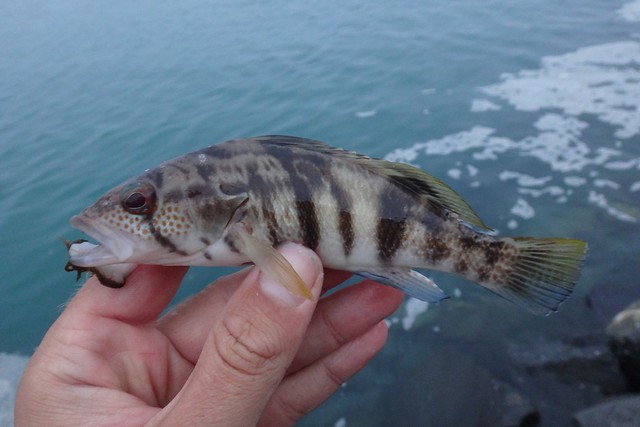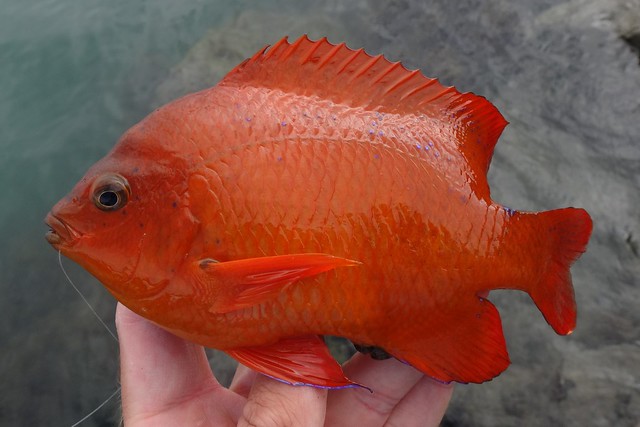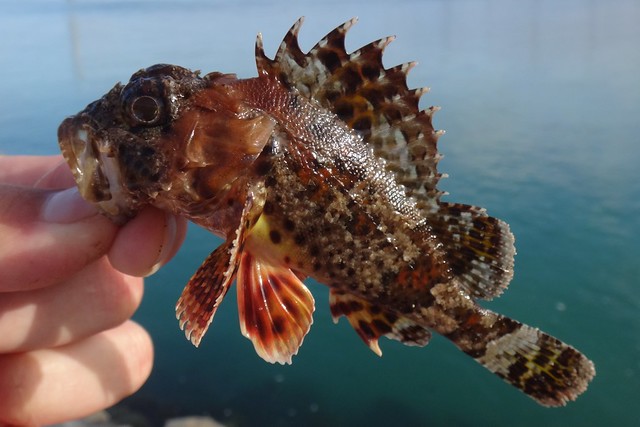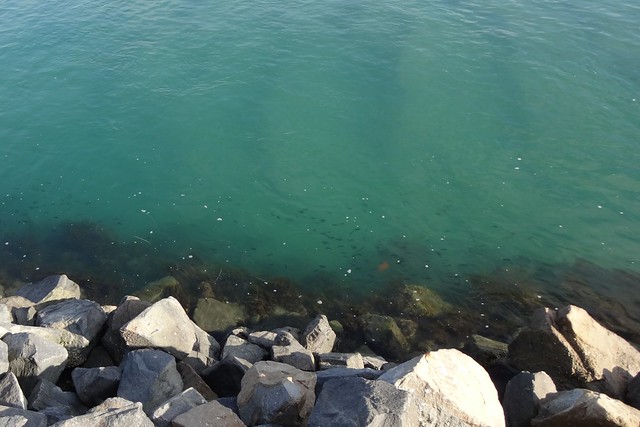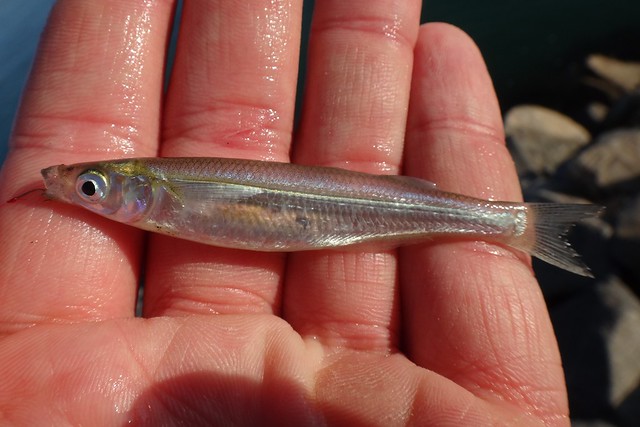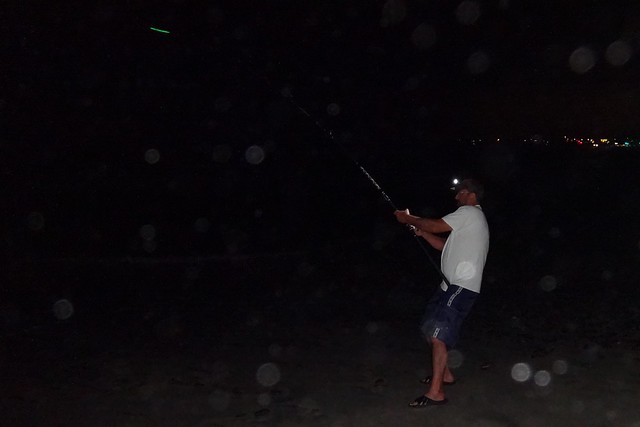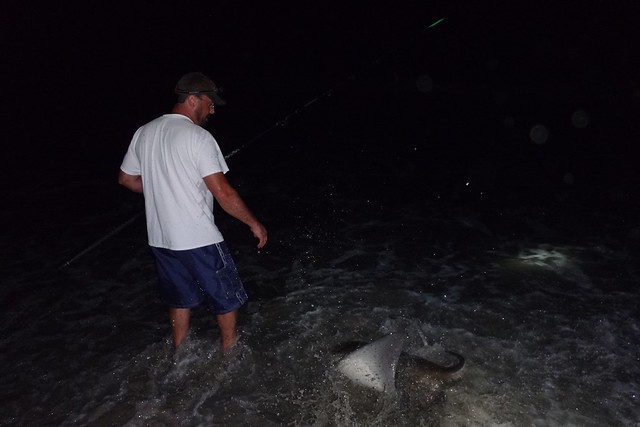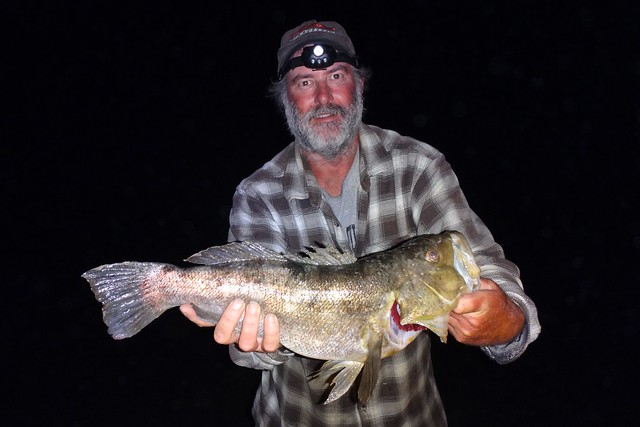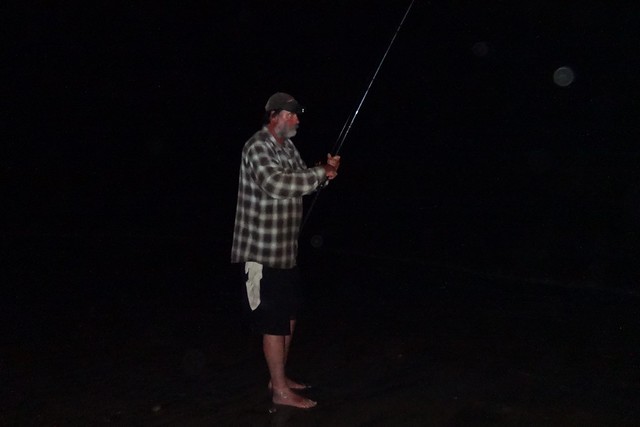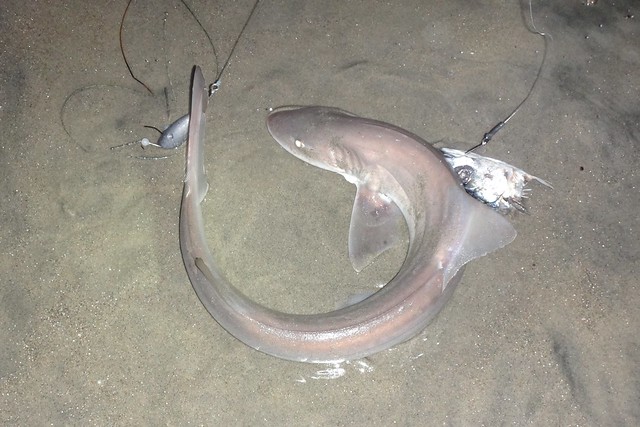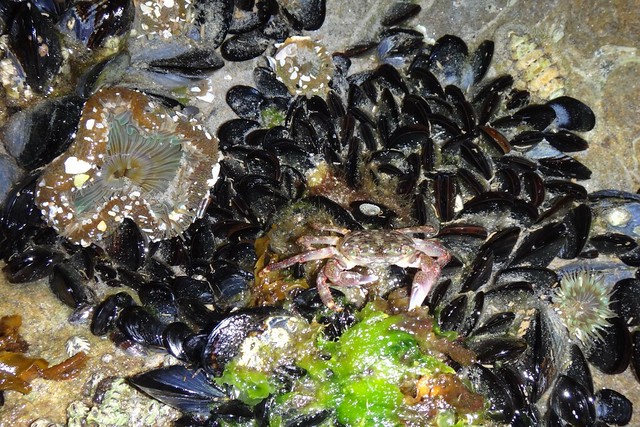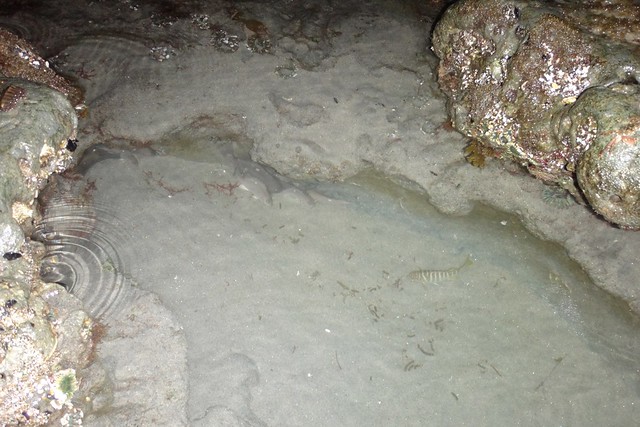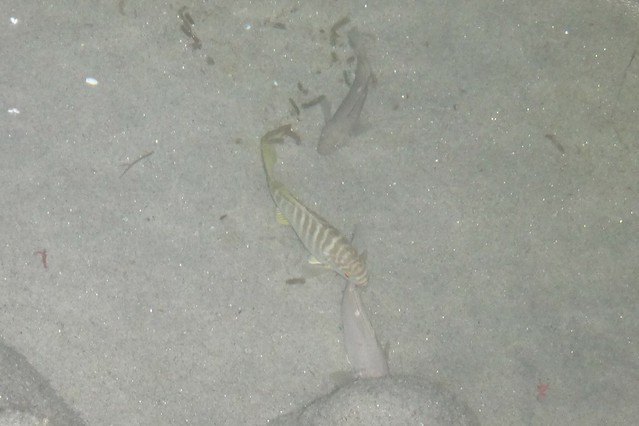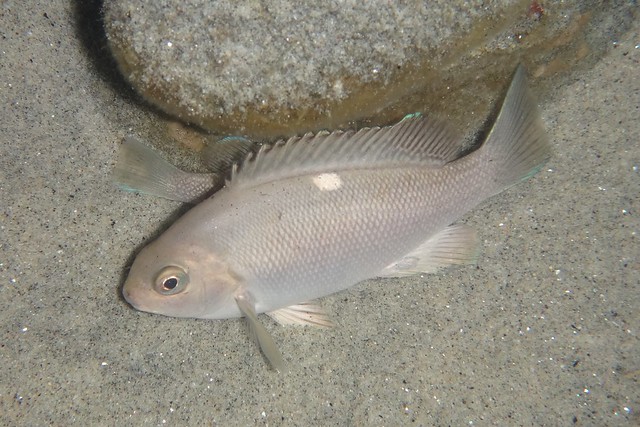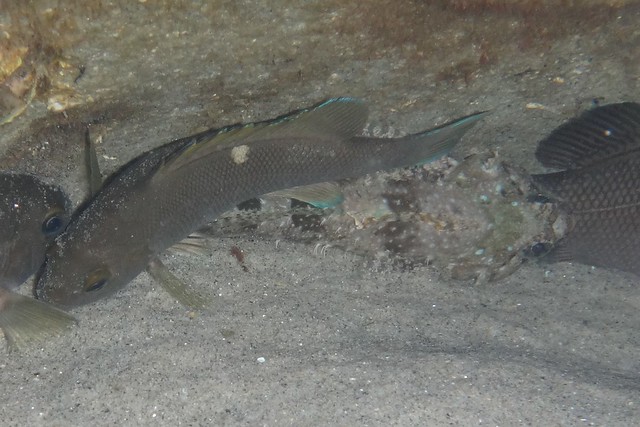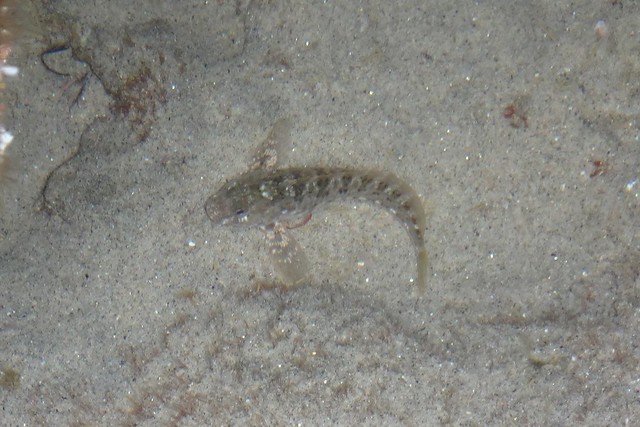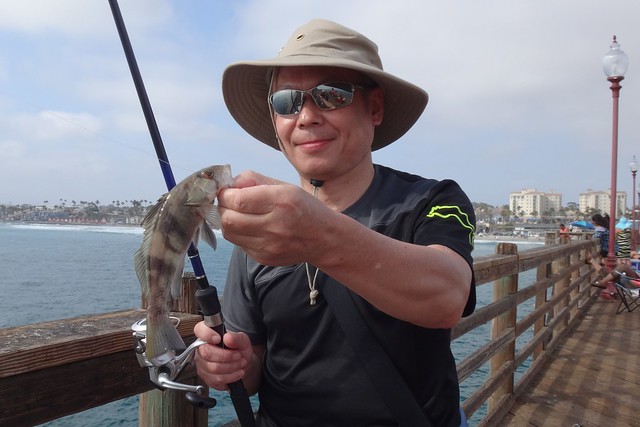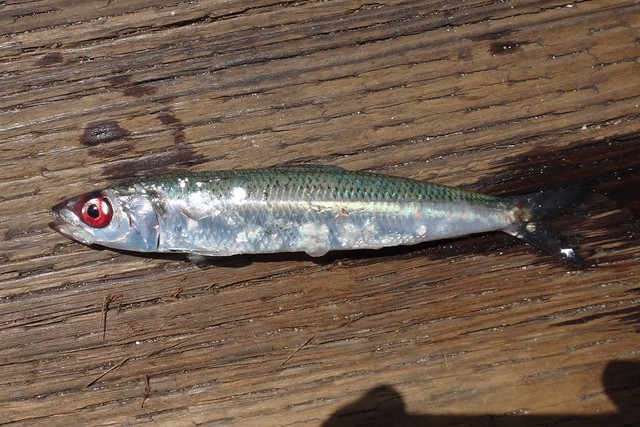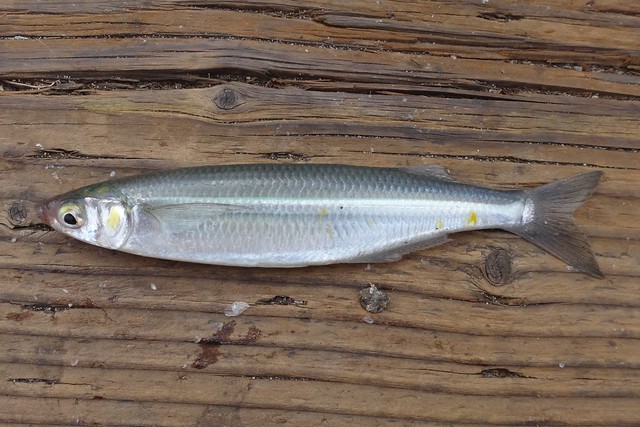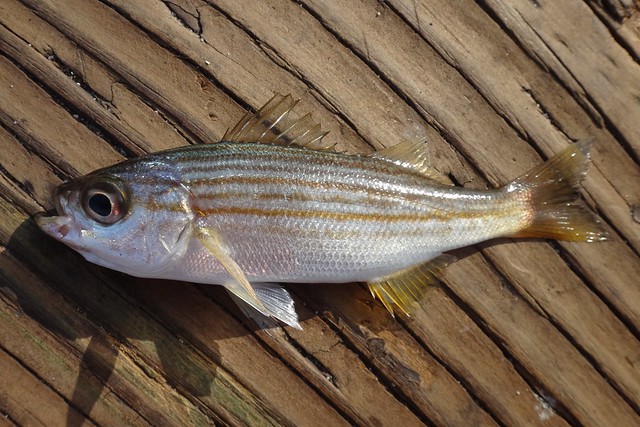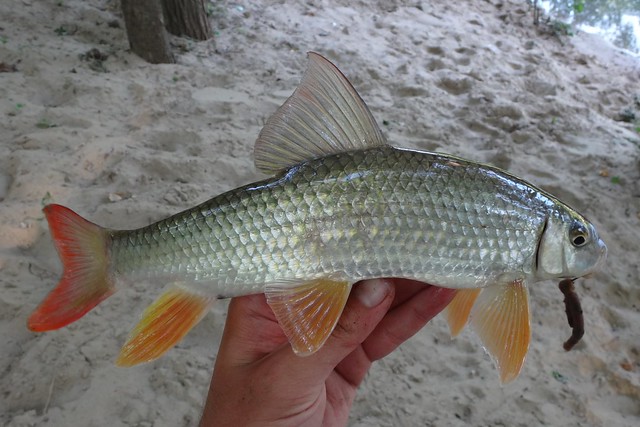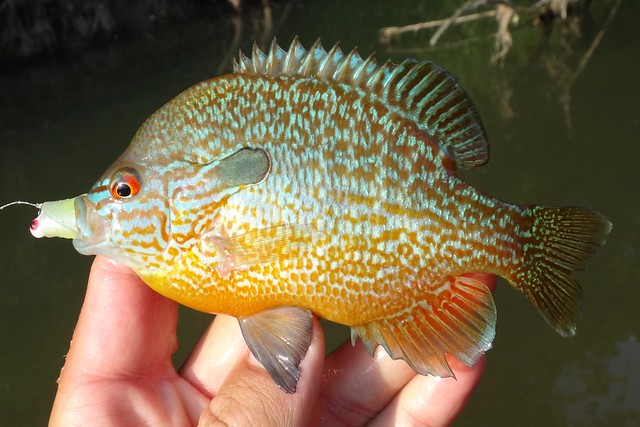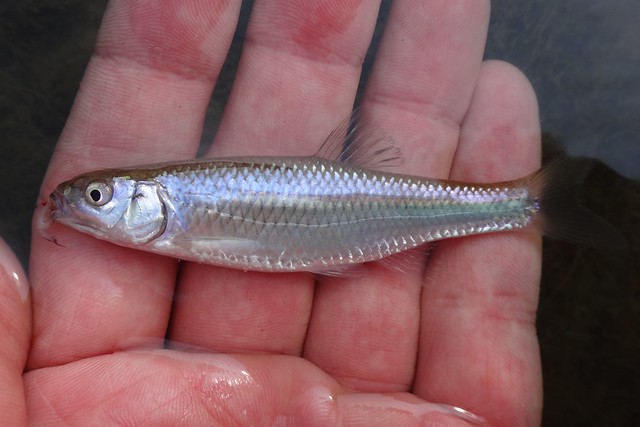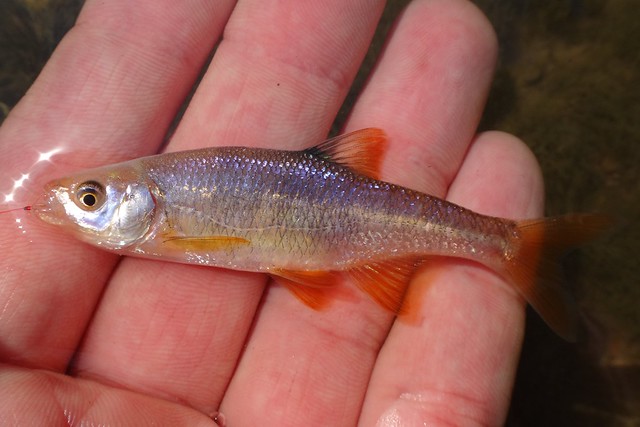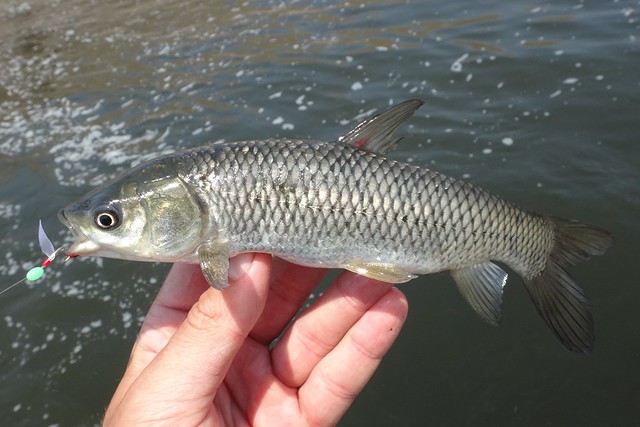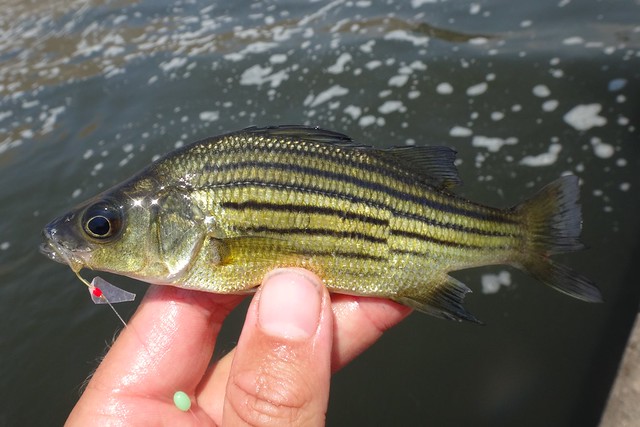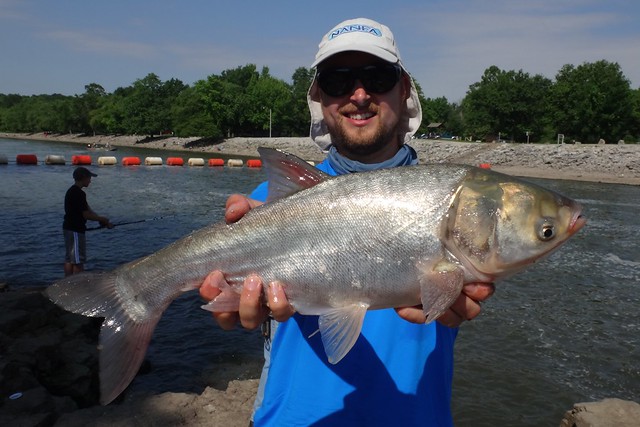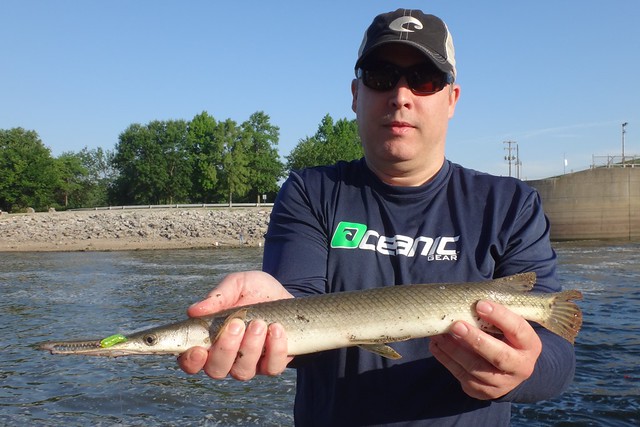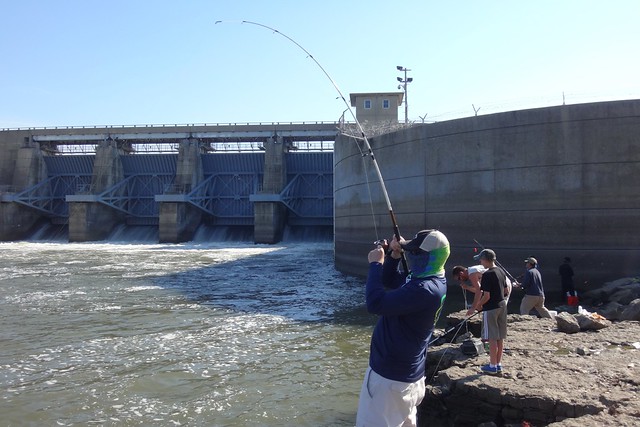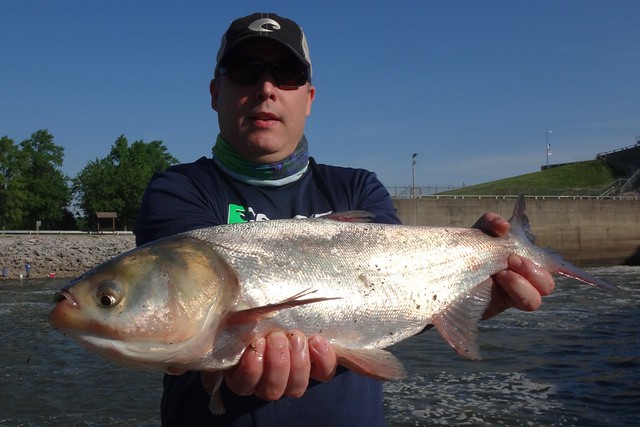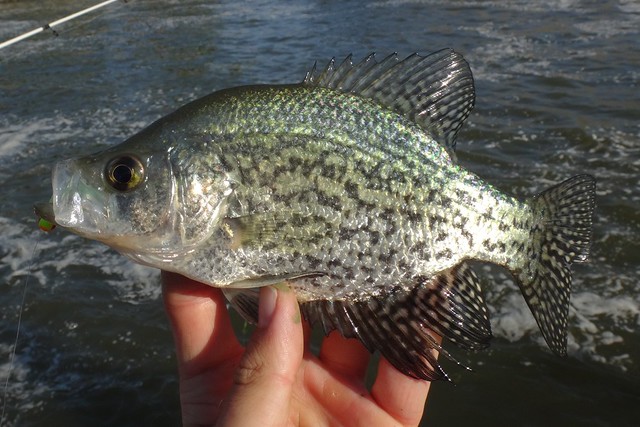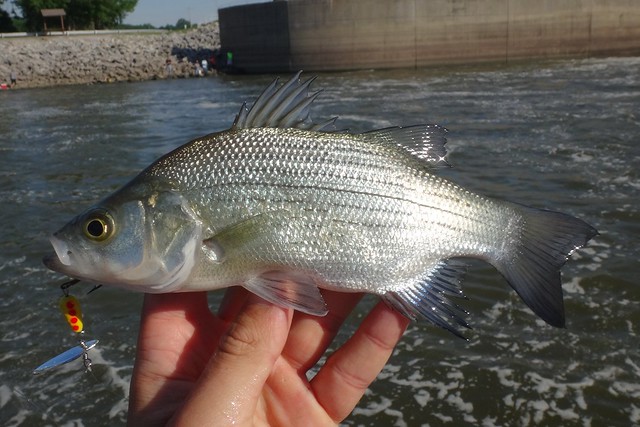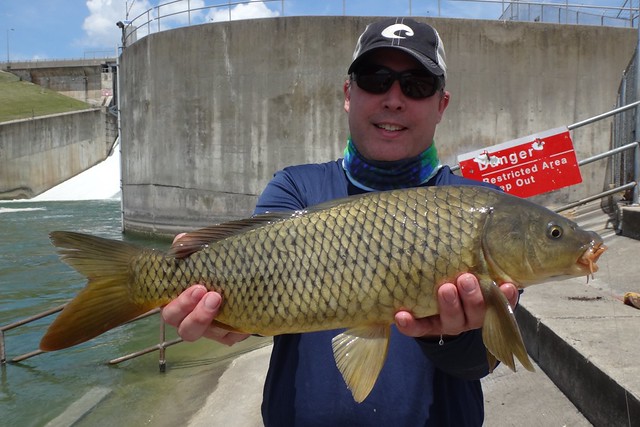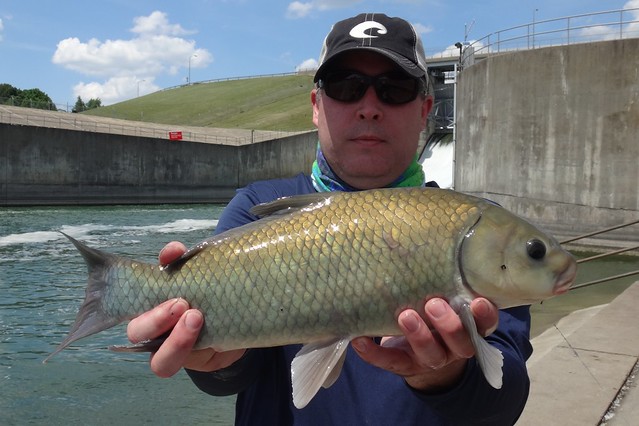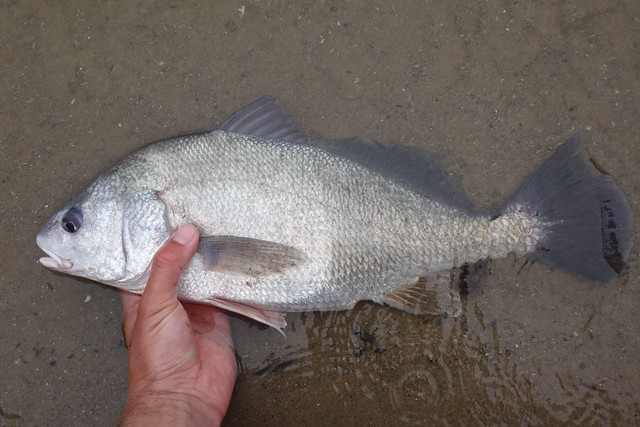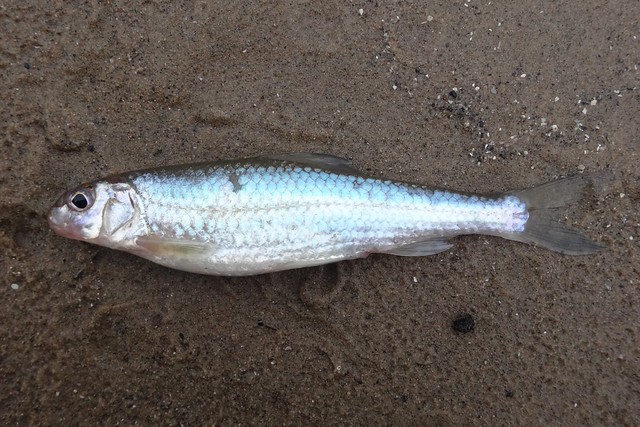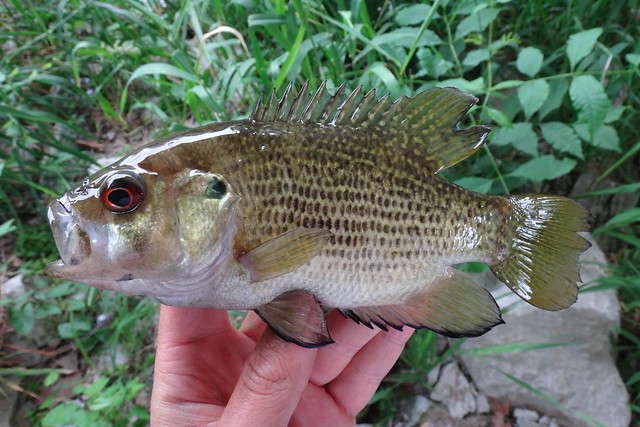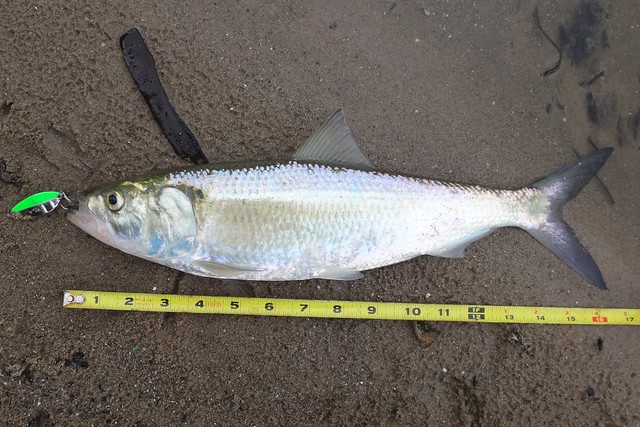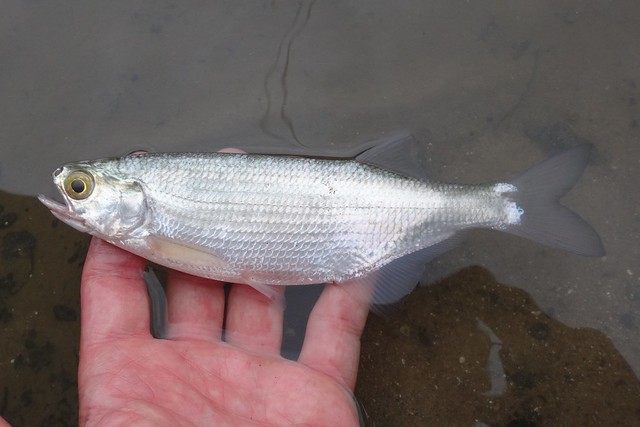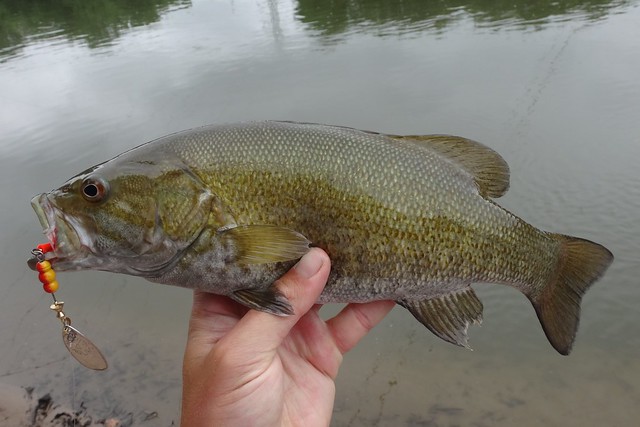I fished a piece of bait on a #12 hook, dropping it next to larger rocks that looked likely to have fish hiding under them. My first catch was a species that was not supposed to be this far north. It was a largemouth blenny, which are common in Mexico.
Largemouth Blenny (Labrisomus xanti) - new hook & line species #337
The water was fairly clear, so I was able to target individual fish. I could see opaleye holding in the current, and after a bit of teasing I was able to get one to bite.
Opaleye (Girella nigricans) - new hook & line species #338
Blennies and opaleyes turned out to be the two most common catches, but when the sun began to set the bite switched to juvenile basses. I was hoping for a spotted sand bass, but I only ended up catching kelp bass and barred sand bass, the two I already have on my lifelist.
Kelp Bass (Paralabrax clathratus)
Barred Sand Bass (Paralabrax nebulifer)
I later found out that the largemouth blennies I caught were the furthest north the species had been recorded. Ken got me in touch with John Snow, the owner of www.mexican-fish.com, who sent my photos to his contacts at the Scripps Institution of Oceanography. They were interested to get some samples for their records, so a few days later I returned to catch more for them.
I switched my bait from squid to mussels on this trip, and it definitely increased the number of bites. This time I had a hard time keeping the garibaldi from taking my bait. I released them quickly and unharmed of course.
Garibaldi (Hypsypops rubicundus)
For a moment I thought my next fish was a blenny, but I quicky pulled my hand back when I saw what it was, a scorpionfish! These fish have venomous spines, and it's very important not to get poked by them. Apparently it ruins your day.
California Scorpionfish (Scorpaena guttata)
Eventually I was able to locate and catch half a dozen largemouth blennies for John Snow to take to Scripps. I was very excited that one of them was a male with breeding colors.
Largemouth Blenny (Labrisomus xanti)
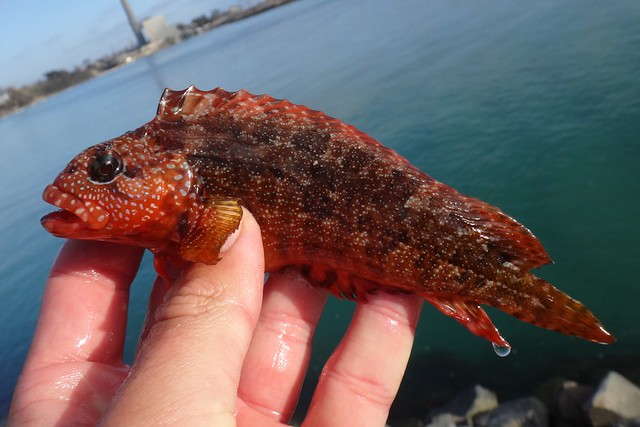
Largemouth blennies have hair-like features on their heads called ciri, but you might not notice them when the fish is out of the water. However, put the fish back under water, and the cirri will stick up like goofy tufts of hair. Their shape can be useful for distinguishing between similar species, so be sure to take a photo like the one below if you need to confirm what kind of blenny you caught.
As the tide started to come in, a school of small, black fish showed up. I think they were juvenile blacksmith (Chromis punctipinnis), but I wasn't able to catch one to confirm. My bait was a tiny piece of mussel on a Tanago hook, but they showed zero interest!
I also saw some tiny silvery fish hanging out on the fringes of the school of black fish. It was tough reaching them with my 7.5 foot rod, but eventually I was able to drift my bait close enough for one to take it. I wasn't sure what I had caught, but after I returned home I identified it as a grunion, which is a very interesting fish. People normally catch them by hand when they show up on sandy beaches to spawn. You're not technically allowed to target them with hook & line, but in my defense I didn't know what it was when I tried to catch it!
California Grunion (Leuresthes tenuis) - new hook & line species #339
I was pretty impressed with the Encino Public Fishing Area, and I only fished a small stretch of the shoreline when I was there. Next time I go I'd like to explore closer and further away from the lagoon mouth to see what other species might be hanging out among the rocks.
